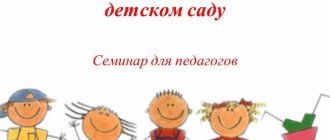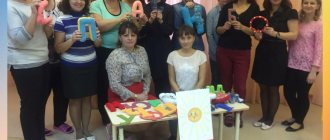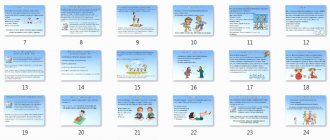Principles of Collaborative Pedagogy
The need to use new forms, methods and technologies of cooperation in pedagogy was caused by social processes such as the humanization of relationships, strengthening the role of the human factor and improving the quality of education and upbringing of students based on innovative processes.
The pedagogy of cooperation presupposes a level of the educational process at which its objects and subjects are united in common activities by the principles of mutual respect, mutual assistance and collectivism.
For supporters of the concept, its main principles are interaction, cooperation, partnerships, humanism, creativity, personal development, collectivism, joint activities, dialogue and mutual enrichment.
Free learning
The main idea of collaborative pedagogy is learning without coercion. During this interaction, the emphasis is on the involvement of the student in the educational process, the joint work of teacher and student in a team, and the individual process of mastering new skills [Pedagogy in Action, 2021].
The essence of the method is that it is not based on the classic principle of “do as I say” and “do as I do,” but on the principle of “let’s think together about how this can be done.” It is this approach that makes it possible to instill responsibility in the student and set him up for the process of active learning.
Joint activity between teacher and student
Traditional education is based on the position of the teacher as a subject, and the student as an object of the pedagogical process. In the concept of cooperation, this position is replaced by the idea of the student as the subject of his educational activity [Pedagogy in Action, 2021].
The two subjects of the same process must work together, as comrades and partners, to form an alliance of the more experienced mentor with the less experienced student, in which neither should be superior to the other.
In this case, the student can safely express his wildest ideas and feel the help and support that is so necessary when solving complex issues.
freedom of choice
The idea of free choice makes it possible to develop the individual qualities of a student’s personality. The teacher needs to set a difficult goal for the students, point out its exceptional complexity and instill confidence that the goal will be achieved.
Freedom of choice is the simplest and at the same time the most effective way to develop creative thinking. The student can set himself a task that he is interested in solving. Thanks to this, he develops his thinking and expands his own boundaries [Pedagogy in Action, 2021].
Development of creative abilities
The traditional educational system is focused on developing a fixed set of knowledge in students, which is usually the standard form of education. As a rule, such an attitude does not imply an individual approach to learning when developing a student’s own creative qualities, taking into account his individual characteristics.
Collaborative pedagogy involves the use of modern and interesting forms and teaching tools, such as games, discussions, brainstorming, team competitions, storytelling, etc. They allow you to find a non-standard approach to solving the most common tasks.
Learning in the zone of proximal development
For the learning process to be as effective and productive as possible, it must take place in the zone of proximal development. It is in this zone that the student feels safe enough to try something new. At the same time, he is open to new things and ready to absorb the knowledge offered to him [Pedagogy in Action, 2021].
A slight exit from the comfort zone allows the student to master skills that were previously unfamiliar to him, and the support of the teacher and other participants in the process allows these skills to be practiced without experiencing stress.
Individual approach to everyone
The idea of an individual approach is to use techniques in which each student feels as if the teacher’s entire attention is directed exclusively to him.
Teachers and educators who adhere to the concept of collaborative pedagogy strive in their classes to make the student a co-author of the lesson, instill in him confidence and relieve him of fear. They also take into account the psychological characteristics and character traits of a particular person, perceiving him as an individual, and not part of a group.
Respectful attitude towards students
Another principle of cooperative pedagogy is dialogue between the teacher and students, a friendly and attentive attitude to their statements, encouragement of ideas and thoughts, even bad or incorrect ones, promotion of activity and cooperation in finding solutions.
The goals and objectives of the course and curriculum are formulated through dialogue between partners, during which the necessary results are identified, the curriculum itself and even the teaching strategy are finalized and updated [Western Sydney University, 2018].
Pros and cons of collaborative pedagogy
Over the years of its existence, this methodology has undergone a large number of changes, resulting from the imperfection of the education system and the unpreparedness of society for change.
At first glance, partnership pedagogy may seem like an easy concept to understand and implement. However, this is not the case. The success of its implementation depends on the work of both sides: the teacher and the students [Brandeis University, 2017].
Learning to interact with others is an important part of collaborative pedagogy. It is a competency-based skill set like any other, requiring constant development and improvement.
For most educators, the concept of collaboration has proven difficult to apply. The main difficulty was that it presupposed adequate interaction between the two parties. And not always one of the parties was ready to meet the other halfway.
For example, not every teacher could find an individual approach to the student. Not all children had an open and flexible character, and therefore were not ready to openly and delicately exchange opinions.
The principle of cooperation presupposes a responsible attitude to the process on both sides. The teacher needs to learn to take into account the opinion of absolutely any group member. Even the most categorical participant has the right to openly voice his point of view on a particular issue, while the teacher’s task is to help all participants agree among themselves and come to a consensus.
Collaborative pedagogy tools include gamification, storytelling, conversation on pressing social issues, discussion, sharing experiences, meeting interesting people, finding solutions, brainstorming, and much more. But in order to successfully use these tools, the teacher must first learn to think comprehensively, skillfully combining all effective methods in his practice [Pedagogy in Action, 2021].
To achieve the desired result, the teacher needs to use in his work not only the usual methods and tools of conducting classes, but also take initiative, using creative thinking and communication skills. His task is to structure the learning process so that each participant is involved in it as much as possible, without losing interest and inspiration.
Another difficulty on the path to the transition to a new format of interaction is the state of modern teaching practice, namely:
- insufficient pedagogical support for both teachers and students;
- general dissatisfaction with the educational process;
- lack of an individual approach to students;
- the reluctance of teachers to change their fundamental position in relation to students;
- lack of innovative teaching and educational technologies aimed at developing the personality of students.
That is why the pedagogy of cooperation is quite difficult to implement in most educational institutions that are accustomed to operating according to old schemes. However, this does not mean that it is not possible to do this.
The ability to negotiate and find a common language with each member of the group is the number one task for any teacher. However, excellent communication skills are useful not only for teachers and professors, but also for everyone who comes into contact with other people in one way or another.
Establishing contact with a person, be it a child or an adult, is not always an easy task. Communication can be complicated by various things: from banal ignorance of the subject to strong self-doubt on one of the parties. Our online Better Communication Techniques program will help you overcome anxiety when communicating with people. After completing it, you will understand how easy it is to start a conversation even with a stranger, and you will also learn how to improve mutual understanding with family and friends.
And yet, despite all the difficulties that arise, this style of interaction between the teacher and students has proven to be effective. The main idea of cooperation pedagogy is to make the learning process as humane and democratic as possible, overcoming the inertia of thinking. Through the opportunity to openly express their individuality, each student will be able to develop their strengths and improve their weaknesses.
The opportunity to participate in an open dialogue with the teacher and other students will allow you to train communication skills, expand boundaries and boundaries, exchange ideas and views, which undoubtedly leads to growth and development.
Respect for all participants in the educational process without exception allows them to open up and show more individuality and creativity in solving even the most complex problems. And setting a common goal for each team member makes the process of achieving it as effective and at the same time interesting. The opportunity to choose allows each student to take sole responsibility for their own learning.
Pedagogy of cooperation today
Collaborative pedagogy processes are a key element in shaping the vision for curriculum transformation in many educational settings. It is they who are becoming increasingly important and popular, as the modern world becomes more and more flexible, mobile and changeable, while dictating new conditions. Educational institutions that appreciated all the advantages of using this concept and implemented it into their strategy were able to take a significant step forward in development [Western Sydney University, 2018].
The joint work of the teacher and students makes it possible to develop adaptive responses not only to current regional issues, but also to look at global problems from a different angle and even take part in the search for key solutions that can affect the whole world.
Collaborative pedagogy involves authentic, purposeful relationships between partners to jointly design, develop, or research curriculum.
Orit Kent and Allison Cook, co-founders of Partnership Pedagogy, explore how teaching and learning are in relationship, especially in the context of student relationships. They strive to expand the understanding of what education is through a relationship-oriented learning process [Brandeis University, 2017].
Within the concept, knowledge is not only what students learn or talk about, but also how they do it. Training becomes an inherently ethical endeavor and helps participants develop empathy and a sense of responsibility for themselves and the entire team. Thanks to this technique, students of all ages learn to talk to each other and use the necessary skills for their own development and growth [Western Sydney University, 2018].
According to Kent and Kus, this experience of discovering and creating meaning with others is very satisfying for students. In the process of studying the material together, the teacher and students become teammates, teachers, friends, partners and ideological inspirers. By framing learning from a relationship perspective, all learning partners take responsibility for each other and broaden the horizons of each team member [Brandeis University, 2017].
In the pedagogy of cooperation, we can highlight the main practices that help each group member learn much more effectively:
- listen and hear the ideas of others;
- formulate your own ideas;
- ask questions openly;
- concentrate on the essence of the problem;
- express disagreement openly but respectfully;
- support each team member.
By applying the ideas of collaborative pedagogy, students begin to experience joy not only from interacting with their group partners, but also from the learning process itself. They take responsibility for acquiring new knowledge.
This approach to learning goes beyond curricular or programmatic features because it is not based on specific activities, content or learning formats. Rather, it is based on teaching certain attitudes and practices of building relationships between peers and the subject they are studying [Brandeis University, 2017].
In today's world, where many strive for meaningful relationships, connections and conversations, these relationship skills are needed more than ever before, both in and outside the classroom, to help build and maintain interactions between group members [Western Sydney University, 2018].
Students are a fundamental part of this transformation, working in partnership with educators. Unlike traditional, often hierarchical discussions about learning, partnerships require teachers and students to work together to agree on goals and share responsibility for the risks and successes of their efforts [Advance HE, 2021].
They are based on the values of respect, reciprocity and responsibility, recognizing that partners bring different experiences and knowledge. Working according to this principle is not a “quick fix” for student engagement, but a long-term process for the future.
Of course, education is not limited to the walls of an educational institution and should continue throughout a person’s adult life. In such cases, online programs aimed at developing and upgrading a particular skill come to the rescue. In the online course “The Best Self-Education Techniques,” we have prepared for you techniques and tools with which you can learn much faster and more efficiently, without losing interest in the process itself. After completing it, you will be convinced that training can not only be useful, but also very rich and exciting.
Partnerships provide opportunities for deep collaboration among all involved, but they also require time to develop and attention to issues of power and agency. It is not surprising that these types of partnerships are now considered one of the radical developments in higher education [Advance HE, 2021].






